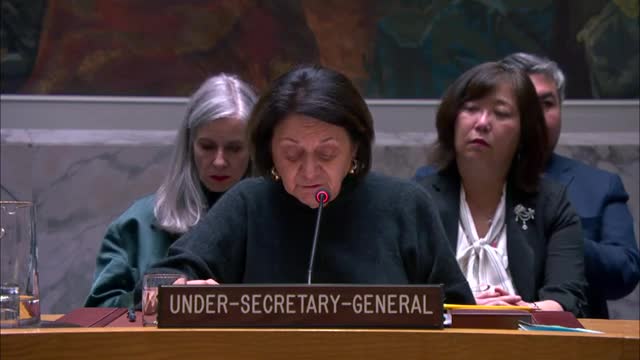Ukraine civilians face rising death toll and displacement amid ongoing Russian attacks
February 25, 2025 | United Nations, Federal
This article was created by AI summarizing key points discussed. AI makes mistakes, so for full details and context, please refer to the video of the full meeting. Please report any errors so we can fix them. Report an error »

The ongoing conflict in Ukraine has reached a grim milestone, marking three years of war that has profoundly affected the lives of millions. During a recent United Nations Security Council briefing, officials highlighted the staggering human toll of the conflict, with over 12,654 civilians, including 673 children, confirmed dead since February 2022. The number of injured civilians has also risen sharply, with nearly 30,000 reported casualties, a figure that is likely much higher due to the chaos of war.
The war has led to the largest displacement crisis in Europe since World War II, with more than 10 million Ukrainians forced from their homes. Of these, 3.6 million remain displaced within Ukraine, while 6.9 million have sought refuge in other countries. Many of these individuals live in precarious conditions, uncertain about their future and whether they will ever return home.
The impact of the war extends beyond immediate casualties. The psychological toll on an entire generation of Ukrainians is immense, with many facing long-term mental health challenges. Additionally, Ukraine has become one of the most heavily mined countries in the world, creating a deadly legacy that will take years to address. The environmental consequences of the conflict are also significant, as the destruction of civilian infrastructure has left millions without essential services. For three consecutive winters, repeated strikes on the energy grid have deprived communities of power and heating, exacerbating the suffering of those affected.
As the conflict continues, the international community is urged to respond to the urgent needs of the Ukrainian people, focusing on humanitarian aid and support for rebuilding efforts. The resilience of the Ukrainian population in the face of such adversity remains a testament to their strength, but the path to recovery will require sustained global attention and action.
The war has led to the largest displacement crisis in Europe since World War II, with more than 10 million Ukrainians forced from their homes. Of these, 3.6 million remain displaced within Ukraine, while 6.9 million have sought refuge in other countries. Many of these individuals live in precarious conditions, uncertain about their future and whether they will ever return home.
The impact of the war extends beyond immediate casualties. The psychological toll on an entire generation of Ukrainians is immense, with many facing long-term mental health challenges. Additionally, Ukraine has become one of the most heavily mined countries in the world, creating a deadly legacy that will take years to address. The environmental consequences of the conflict are also significant, as the destruction of civilian infrastructure has left millions without essential services. For three consecutive winters, repeated strikes on the energy grid have deprived communities of power and heating, exacerbating the suffering of those affected.
As the conflict continues, the international community is urged to respond to the urgent needs of the Ukrainian people, focusing on humanitarian aid and support for rebuilding efforts. The resilience of the Ukrainian population in the face of such adversity remains a testament to their strength, but the path to recovery will require sustained global attention and action.
View full meeting
This article is based on a recent meeting—watch the full video and explore the complete transcript for deeper insights into the discussion.
View full meeting